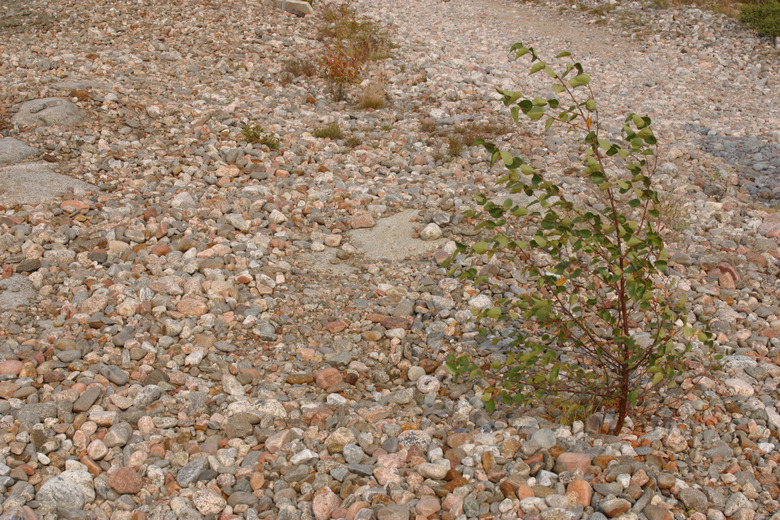How To Keep Weeds From Growing Through The Pea Gravel
If you're sick and tired of pulling up weeds growing through your beloved pea gravel landscaping, it's time to take charge of the situation. After all, you may have installed pea gravel as a low-maintenance alternative to lawn grass in the first place. With a busy schedule to balance and kids in the picture, you can't afford to take chances with using dangerous chemical weed killers. The good news is that you can use non-toxic, environmentally friendly household materials to control weeds. Not only do they have names that you can pronounce, they're inexpensive and safe to use around little fingers.
Step 1
Step 1
Add 1 teaspoon of non-degreasing liquid dishwashing soap to a quart of household vinegar to create an effective yet safe weed killer. Cap the bottle and upend it several times to mix the solution well. Don't shake it vigorously or you'll kick up froth. Vinegar typically has a 5 percent acetic acid content, which is strong enough to kill many weeds if you use it straight out of the bottle. Soap acts as a surfactant to make the vinegar adhere well to the weeds.
- If you're sick and tired of pulling up weeds growing through your beloved pea gravel landscaping, it's time to take charge of the situation.
- With a busy schedule to balance and kids in the picture, you can't afford to take chances with using dangerous chemical weed killers.
Step 2
Step 2
Funnel some of the solution into a plastic spray bottle. Spritz all surfaces of the weed generously to the point of runoff. Don't forget the undersides of the leaves. Apply the weed killer on a calm, sunny day when no rain is in the forecast and the temperature is no higher than 85 degrees Fahrenheit. Excessive heat causes liquids to evaporate quickly.
Step 3
Step 3
Flood the soil above the weed's root zone liberally with the vinegar mix. Vinegar lowers the soil pH to a point that's intolerable for roots, killing them quickly.
- Funnel some of the solution into a plastic spray bottle.
- Vinegar lowers the soil pH to a point that's intolerable for roots, killing them quickly.
Step 4
Step 4
Repeat the vinegar treatment every day or two if the weeds don't look like they're stressing.
Step 5
Step 5
Label the vinegar weed killer clearly with a permanent marker,- and store it in a cool, dark spot indefinitely.
Step 6
Step 6
Check your pea gravel every day to head new weeds off at the pass as soon as possible. The younger the weed, the easier it is to kill.
Tip
If you don't have any vinegar, bring a kettle of water to a rolling boil on the stove. Pour the hot water slowly and carefully on weeds. Repeat in a day or two if weeds don't show obvious signs of distress.
Warning
Fighting weeds is a long-term commitment. No permanent solution exists for getting rid of them.
Things Needed
- Measuring spoons
- Non-degreasing liquid dishwashing soap
- Household vinegar
- Funnel
- Plastic spray bottle
- Permanent marker
References
- Washington Toxics Coalition: Weeds in the Lawn and Garden
- University of Washington Botanic Gardens: Vinegar Weed Killer
- Gardening Channel: How to Kill Weeds the Eco-Friendly Way
- North Coast Gardening: Organic Weed Control — How to Kill Weeds Without Harmful Chemicals
- University of Illinois Extension: Vinegar — Salad Dressing or Weed Killer?
- No-Dig Vegetable Garden: Organic Weed Control — How to Kill Weeds With Homemade Weed Killer and Other Natural Methods
- Today's Homeowner With Danny Lipford: How to Kill Weeds Using Boiling Water
- Small-Farm-Permaculture-and-Sustainable-Living: Organic Weed Killer Formula: Try This Natural Homemade Vinegar Weed Killer Recipe!
- Web MD: 6 Fast and Natural Ways to Kill Weeds
- Natural News: Use Vinegar to Kill Weeds Naturally and Give Monsanto's Roundup the Heave Ho
